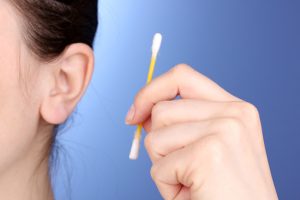
Activities like chewing or moving your jaw help to push earwax out. It then flakes off or washes off during showering. This is a continuous process – which in some cases can fail. When the process of self-cleaning isn’t effective, earwax can build up, partially or fully blocking the ear canal. Dr. Schwartz added, “Patients often think that they are preventing earwax from building up by cleaning out their ears with cotton swabs, paper clips, ear candles, or any number of unimaginable things that people put in their ears. The problem is that this effort to eliminate earwax is only creating further issues because the earwax is just getting pushed down and impacted farther into the ear canal. Anything that fits in the ear could cause serious harm to the ear drum and canal with the potential for temporary or even permanent damage.”
The guidelines for ear care were published in Otolaryngology — Head and Neck Surgery outlining the dangers of excessive earwax removal. Here’s what the new guidelines entail:
- Avoid overcleaning as it can irritate the ear canal and even cause an infection.
- Don’t stick objects in your ear. Use of cotton swabs, hair pins, and toothpicks can cause a cut in the ear canal, a hole in the eardrum, or even dislocation of the hearing bones, leading to problems such as dizziness, ringing in the ears, and hearing loss.
- Never use “ear candles”. There is no evidence demonstrating that this practice can remove impacted earwax. On the other hand, candling might damage the ear canal and eardrum.
- See the doctor if you’re experiencing hearing loss, ear fullness, drainage, bleeding, or ear pain.
- Consult with your healthcare provider on whether you can treat cerumen impaction at home, as certain medical or ear conditions make some treatments unsafe.